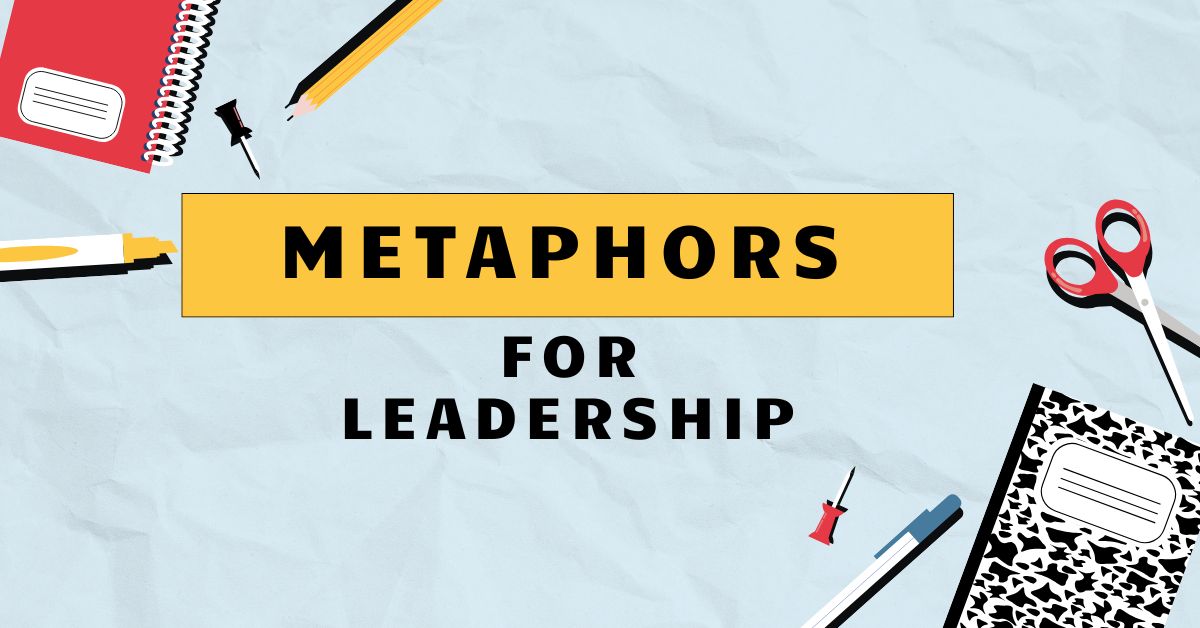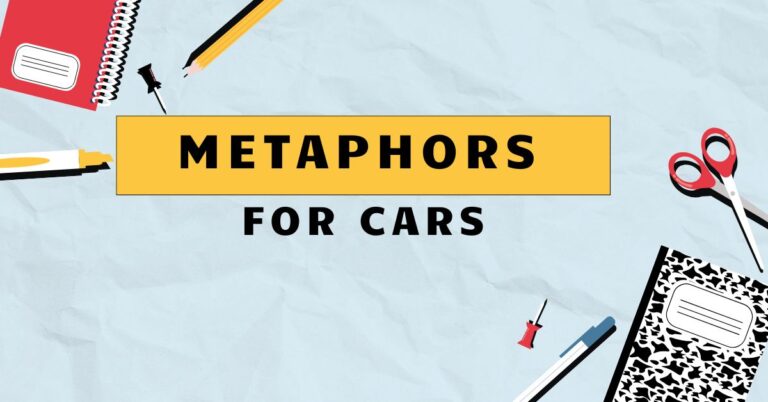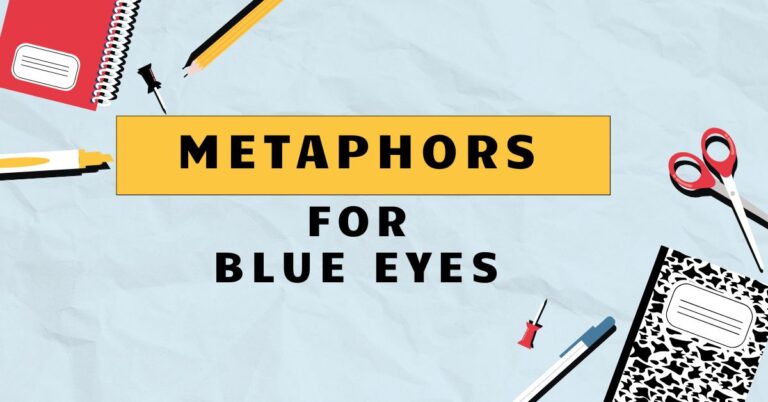39 Metaphors for Leadership: A Comprehensive Guide
Leadership is often abstract, making it challenging to grasp and articulate. Metaphors provide a powerful tool to understand and communicate leadership concepts more effectively.
By framing leadership through familiar images and ideas, we can unlock deeper insights and foster better understanding. This article explores various metaphors for leadership, examining their meanings, applications, and potential pitfalls.
Students, business professionals, and anyone interested in leadership development will benefit from this guide, gaining practical knowledge and enhancing their communication skills.
Table of Contents
- Introduction
- Definition of Metaphor and Leadership
- Structural Breakdown
- Types and Categories of Leadership Metaphors
- Examples of Leadership Metaphors
- Usage Rules
- Common Mistakes
- Practice Exercises
- Advanced Topics
- FAQ
- Conclusion
Definition of Metaphor and Leadership
To effectively utilize metaphors for leadership, it’s essential to understand both concepts individually and how they intersect.
What is a Metaphor?
A metaphor is a figure of speech where a word or phrase is applied to an object or action to which it is not literally applicable. It’s a comparison that states something *is* something else, creating a vivid image or deeper understanding.
Unlike similes, which use “like” or “as” to make a comparison, metaphors directly equate two unlike things to highlight their shared qualities. Metaphors enrich language, making it more expressive and engaging.
They go beyond literal meaning to evoke emotions, create imagery, and reveal hidden similarities.
For example, saying “He is a lion in battle” doesn’t mean he’s actually a lion, but that he possesses characteristics associated with a lion, such as courage and strength.
What is Leadership?
Leadership is the process of influencing others to achieve a common goal. It involves guiding, motivating, and inspiring individuals or teams to work together effectively.
Effective leadership encompasses various qualities, including vision, integrity, empathy, and the ability to make sound decisions. Leadership isn’t solely about holding a position of authority; it’s about empowering others and fostering a collaborative environment.
A leader provides direction, sets an example, and supports their team’s growth and development. Leadership is a dynamic and evolving concept, adapting to different contexts and challenges.
Leadership Metaphor Defined
A leadership metaphor uses an image, idea, or concept to represent the role, qualities, or actions of a leader. By framing leadership within a familiar context, these metaphors make abstract leadership principles more concrete and understandable.
They allow for a deeper exploration of leadership dynamics and can inspire new perspectives. Leadership metaphors can be used to communicate a specific leadership style, promote a desired organizational culture, or motivate teams towards a shared vision.
They are powerful tools for communication, training, and strategic thinking.
Structural Breakdown
Understanding the structure of a metaphor helps in analyzing and applying them effectively. The core components are the source domain, the target domain, and the mapping between them.
Source Domain
The source domain is the familiar concept or image used to explain the target domain. It’s the concrete idea that serves as the basis for the metaphor.
For example, in the metaphor “Leadership is a journey,” the source domain is “journey.” Source domains are often drawn from everyday experiences, natural phenomena, or well-known concepts, making them accessible and relatable. The effectiveness of a metaphor depends on the clarity and relevance of the source domain.
A well-chosen source domain can illuminate complex ideas and create a strong connection with the audience.
Target Domain
The target domain is the abstract concept being explained or understood through the metaphor. In the context of this article, the target domain is always “leadership.” The target domain is often complex or intangible, making it difficult to grasp directly.
Metaphors provide a bridge between the concrete source domain and the abstract target domain, making the latter more accessible. The goal is to transfer understanding from the source domain to the target domain, shedding light on the nuances and complexities of leadership.
Mapping
Mapping is the process of connecting specific aspects of the source domain to corresponding aspects of the target domain. It involves identifying the similarities and relationships between the two concepts.
For example, in the “Leadership is a journey” metaphor, the mapping might include: the leader as the guide, the goals as the destination, the challenges as obstacles on the path, and the team members as fellow travelers. Effective mapping ensures that the metaphor is coherent and meaningful.
The success of a leadership metaphor hinges on the strength and clarity of the mapping process. A well-defined mapping allows for a deeper understanding of leadership dynamics and fosters better communication.
Types and Categories of Leadership Metaphors
Leadership metaphors can be categorized based on the source domain they draw from. Here are some common types:
The Journey Metaphor
This metaphor frames leadership as a journey, with the leader as the guide, the goals as the destination, and the team as fellow travelers. It emphasizes the importance of direction, progress, and overcoming obstacles.
The journey metaphor is versatile and can be applied to various leadership contexts, highlighting the challenges and rewards of pursuing a shared vision. It underscores the need for planning, adaptability, and resilience.
The journey metaphor is particularly effective in communicating long-term goals and motivating teams through difficult times. It emphasizes the importance of collaboration and shared responsibility in achieving success.
The Gardener Metaphor
This metaphor portrays the leader as a gardener who cultivates and nurtures their team members. It emphasizes the importance of creating a supportive environment, providing resources, and fostering growth.
The gardener metaphor highlights the leader’s role in facilitating individual development and team cohesion. It underscores the need for patience, attentiveness, and a long-term perspective.
The gardener metaphor is particularly relevant in organizations that prioritize employee development and empowerment. It promotes a culture of learning, collaboration, and mutual respect.
The Conductor/Orchestra Metaphor
This metaphor likens the leader to a conductor of an orchestra, coordinating and harmonizing the efforts of individual musicians to create a beautiful symphony. It emphasizes the importance of communication, collaboration, and strategic alignment.
The conductor metaphor highlights the leader’s role in bringing together diverse talents and ensuring that everyone is working towards a common goal. It underscores the need for clear direction, effective communication, and mutual respect.
The conductor metaphor is particularly effective in organizations that require high levels of coordination and teamwork. It promotes a culture of collaboration, innovation, and excellence.
The Architect Metaphor
This metaphor represents the leader as an architect who designs and builds structures, systems, or organizations. It emphasizes the importance of vision, planning, and strategic thinking.
The architect metaphor highlights the leader’s role in creating a solid foundation, establishing clear blueprints, and overseeing the construction process. It underscores the need for foresight, attention to detail, and the ability to anticipate challenges.
The architect metaphor is particularly relevant in organizations undergoing significant change or transformation. It promotes a culture of innovation, strategic thinking, and long-term sustainability.
The Coach Metaphor
This metaphor depicts the leader as a coach who trains, mentors, and motivates their team members to achieve peak performance. It emphasizes the importance of skill development, feedback, and continuous improvement.
The coach metaphor highlights the leader’s role in identifying individual strengths and weaknesses, providing targeted training, and fostering a culture of learning. It underscores the need for empathy, communication, and a commitment to individual and team growth.
The coach metaphor is particularly effective in organizations that prioritize employee development and performance management. It promotes a culture of continuous improvement, collaboration, and individual empowerment.
The Shepherd Metaphor
The shepherd metaphor portrays the leader as a caretaker, guiding and protecting their flock. It emphasizes the importance of trust, guidance, and responsibility for the well-being of the team.
The shepherd metaphor highlights the leader’s role in providing care, direction, and protection. It underscores the need for empathy, patience, and a commitment to the welfare of the team.
The shepherd metaphor is particularly relevant in organizations where trust and loyalty are paramount. It promotes a culture of care, support, and mutual respect.
The Warrior Metaphor
The warrior metaphor represents the leader as a fighter, defending their team and organization against threats. It emphasizes courage, resilience, and strategic thinking.
The warrior metaphor highlights the leader’s role in protecting their team, fighting for their interests, and overcoming obstacles. It underscores the need for bravery, determination, and a strategic mindset.
The warrior metaphor is particularly relevant in highly competitive or challenging environments. It promotes a culture of resilience, determination, and strategic thinking.
Examples of Leadership Metaphors
Here are some examples of common leadership metaphors, categorized by type:
Journey Metaphor Examples
The journey metaphor is a powerful way to communicate the process of leadership. The following table illustrates different ways to use the journey metaphor in the context of leadership.
| Metaphorical Statement | Explanation |
|---|---|
| “He navigated the company through the turbulent waters of the recession.” | The recession is portrayed as a dangerous sea, and the leader guided the company safely through it. |
| “She charted a new course for the organization.” | The leader set a new direction and plan for the organization’s future. |
| “They are on a journey to become industry leaders.” | The organization is striving to achieve a top position in their industry. |
| “He’s a trailblazer, forging a new path in the market.” | The leader is an innovator, creating new opportunities and directions in the market. |
| “The company is climbing the mountain of success.” | Success is portrayed as a difficult climb, requiring effort and perseverance. |
| “She is the compass, guiding us towards our goals.” | The leader provides direction and helps the team stay on track. |
| “We’re all in the same boat, navigating towards a brighter future.” | The team is working together to achieve a positive outcome. |
| “The road to success is paved with hard work and dedication.” | Achieving success requires significant effort and commitment. |
| “He’s steering the ship through challenging times.” | The leader is guiding the organization through difficult circumstances. |
| “She’s mapping out the territory for future growth.” | The leader is planning and preparing for the organization’s expansion. |
| “They are embarking on a new adventure together.” | The team is starting a new and exciting project or initiative. |
| “He’s the expedition leader, guiding us to unexplored territories.” | The leader is taking the team into new and innovative areas. |
| “She’s leading the caravan across the desert of uncertainty.” | The leader is guiding the team through a period of instability. |
| “They are on a pilgrimage to achieve their mission.” | The team is deeply committed to achieving their goals. |
| “He’s the navigator, ensuring we stay on the right course.” | The leader keeps the team focused and on track. |
| “She’s the cartographer, creating a roadmap for success.” | The leader is planning and strategizing for future achievements. |
| “They are exploring uncharted waters in the industry.” | The team is innovating and venturing into new areas. |
| “He’s the lighthouse, guiding us safely to shore.” | The leader provides direction and support during difficult times. |
| “She’s the pilot, guiding the company to new heights.” | The leader is helping the company achieve greater success. |
| “They are trekking through the wilderness of change.” | The team is navigating a period of significant transformation. |
| “He’s the pathfinder, leading us to new opportunities.” | The leader is discovering and creating new possibilities. |
| “She’s the ferryman, helping us cross the river of obstacles.” | The leader is assisting the team in overcoming challenges. |
| “They are sailing smoothly towards their objectives.” | The team is making good progress towards their goals. |
| “He’s the captain, ensuring the ship stays afloat.” | The leader is managing the organization effectively during difficult times. |
Gardener Metaphor Examples
The gardener metaphor emphasizes nurturing and growth. The following table illustrates how the gardener metaphor can be applied to leadership.
| Metaphorical Statement | Explanation |
|---|---|
| “He cultivated a strong team with diverse talents.” | The leader nurtured and developed the skills of their team members. |
| “She planted the seeds of innovation within the company.” | The leader introduced new ideas and encouraged creativity. |
| “They pruned the unproductive branches to allow for new growth.” | The leader eliminated inefficient processes to promote improvement. |
| “He provided the fertile ground for new ideas to flourish.” | The leader created a supportive environment for innovation. |
| “She nurtured the team, helping them blossom into their full potential.” | The leader supported the growth and development of their team members. |
| “He weeds out negativity to maintain a positive work environment.” | The leader addresses and eliminates negative influences in the workplace. |
| “She fertilizes the team with encouragement and support.” | The leader motivates and supports the team to achieve their goals. |
| “He irrigates the organization with new knowledge and resources.” | The leader provides the necessary information and tools for success. |
| “She tends to the team’s needs, ensuring they have what they need to thrive.” | The leader cares for the team and provides the support they require. |
| “He harvests the fruits of their labor with pride.” | The leader recognizes and celebrates the team’s accomplishments. |
| “She cultivates a culture of collaboration and growth.” | The leader fosters an environment where teamwork and development are valued. |
| “He plants the seeds of success in every team member.” | The leader instills the qualities and skills needed for success in each individual. |
| “She nourishes the team with positive feedback and recognition.” | The leader provides encouragement and acknowledges the team’s contributions. |
| “He prunes away distractions to keep the team focused.” | The leader eliminates obstacles that hinder the team’s progress. |
| “She provides the sunshine and water needed for the team to grow.” | The leader offers the support and resources necessary for the team’s development. |
| “He cultivates a garden of innovation and creativity.” | The leader fosters an environment where new ideas and creative solutions are encouraged. |
| “She weeds out complacency to encourage continuous improvement.” | The leader addresses and eliminates attitudes that hinder progress and development. |
| “He fertilizes the organization with new opportunities and challenges.” | The leader provides opportunities and challenges that promote growth and development. |
| “She tends to the team’s morale, ensuring a positive and supportive atmosphere.” | The leader cares for the team’s well-being and maintains a positive work environment. |
| “He harvests the collective wisdom of the team to make informed decisions.” | The leader gathers and utilizes the diverse knowledge and experience of the team. |
| “She cultivates a strong root system of trust and respect within the team.” | The leader fosters an environment where teamwork and development are valued. |
| “He plants the seeds of resilience in every team member.” | The leader instills the qualities and skills needed for success in each individual. |
| “She nourishes the team with learning and development opportunities.” | The leader provides encouragement and acknowledges the team’s contributions. |
| “He prunes away bureaucratic processes to keep the team agile.” | The leader eliminates obstacles that hinder the team’s progress. |
| “She provides the soil and nutrients needed for sustainable growth.” | The leader offers the support and resources necessary for the team’s development. |
Conductor Metaphor Examples
The conductor metaphor highlights coordination and harmony. The following table illustrates how the conductor metaphor can be applied to leadership.
| Metaphorical Statement | Explanation |
|---|---|
| “He conducted the team to achieve a flawless performance.” | The leader guided the team to achieve a perfect result. |
| “She orchestrated a seamless collaboration between departments.” | The leader coordinated the efforts of different departments to work together effectively. |
| “He harmonized the diverse talents of the team into a cohesive unit.” | The leader brought together different skills and abilities to create a unified team. |
| “She composed a strategy that aligned with the company’s vision.” | The leader created a plan that supported the organization’s goals. |
| “He led the team like a conductor leading an orchestra.” | The leader guided and coordinated the team to achieve a harmonious result. |
| “She ensures that each team member plays their part in the symphony of success.” | The leader ensures that everyone contributes to achieving the overall goals. |
| “He fine-tunes the performance of the team to achieve optimal results.” | The leader makes small adjustments to improve the team’s performance. |
| “She conducts the team with precision and grace.” | The leader guides the team with skill and elegance. |
| “He ensures that every instrument in the orchestra plays in harmony.” | The leader ensures that all team members work together effectively. |
| “She conducts the team with a clear and steady beat.” | The leader provides consistent direction and guidance. |
| “He composes a plan that brings out the best in each team member.” | The leader creates a strategy that utilizes the strengths of each individual. |
| “She orchestrates the team’s efforts to achieve a harmonious outcome.” | The leader coordinates the team’s work to achieve a unified result. |
| “He conducts the team through challenging passages with confidence.” | The leader guides the team through difficult situations with assurance. |
| “She ensures that the team’s performance is a symphony of collaboration.” | The leader fosters an environment where teamwork and cooperation are valued. |
| “He conducts the team with a vision of excellence.” | The leader guides the team with a focus on achieving high standards. |
| “She orchestrates the team’s talents to create a masterpiece of innovation.” | The leader coordinates the team’s skills to produce creative and innovative solutions. |
| “He conducts the team with a deep understanding of their strengths and weaknesses.” | The leader guides the team with a knowledge of each individual’s capabilities. |
| “She ensures that the team’s performance is a harmonious blend of skills and abilities.” | The leader fosters an environment where teamwork and cooperation are valued. |
| “He conducts the team with a passion for achieving great things.” | The leader guides the team with enthusiasm and a desire for success. |
| “She orchestrates the team’s efforts to create a symphony of success.” | The leader coordinates the team’s work to achieve a unified and successful result. |
Architect Metaphor Examples
The architect metaphor emphasizes planning and building. The following table illustrates how the architect metaphor can be applied to leadership.
| Metaphorical Statement | Explanation |
|---|---|
| “He architected a new organizational structure to improve efficiency.” | The leader designed and implemented a new structure to enhance performance. |
| “She built a strong foundation of trust within the team.” | The leader established a solid basis of confidence among team members. |
| “They designed a plan for long-term growth and sustainability.” | The leader created a strategy for the organization’s future success. |
| “He laid the groundwork for a successful partnership.” | The leader prepared the conditions for a productive collaboration. |
| “She constructed a framework for innovation and creativity.” | The leader created an environment that encourages new ideas. |
| “He designed a culture of collaboration and mutual respect.” | The leader established an environment where teamwork is valued. |
| “She built a bridge between the different departments.” | The leader fostered communication and cooperation between departments. |
| “He laid the cornerstone for the company’s future success.” | The leader established a solid foundation for the organization’s achievements. |
| “She constructed a system for continuous improvement.” | The leader created a process for ongoing development and enhancement. |
| “He designed a plan for overcoming the challenges ahead.” | The leader created a strategy for addressing future obstacles. |
| “She built a team that was resilient and adaptable.” | The leader fostered a team that could withstand challenges and adapt to change. |
| “He designed a strategy that was both innovative and practical.” | The leader created a plan that was creative and achievable. |
| “She built a reputation for excellence and integrity.” | The leader fostered a reputation for high standards and ethical behavior. |
| “He designed a system that was both efficient and effective.” | The leader created a plan that was creative and achievable. |
| “She built a brand that was synonymous with quality and innovation.” | The leader fostered a reputation for high standards and ethical behavior. |
| “He designed a workplace that was both inspiring and supportive.” | The leader created a plan that was creative and achievable. |
| “She built a network of relationships that was strong and reliable.” | The leader fostered a reputation for high standards and ethical behavior. |
| “He designed a process that was both transparent and accountable.” | The leader created a plan that was creative and achievable. |
| “She built a culture of learning and development.” | The leader fostered a reputation for high standards and ethical behavior. |
| “He designed a model that was both sustainable and scalable.” | The leader created a plan that was creative and achievable. |
Coach Metaphor Examples
The coach metaphor emphasizes training and motivation. The following table illustrates how the coach metaphor can be applied to leadership.
| Metaphorical Statement | Explanation |
|---|---|
| “He coached the team to victory.” | The leader trained and motivated the team to achieve success. |
| “She mentored her team members, helping them develop their skills.” | The leader guided and supported her team members in their professional development. |
| “He trained his employees to become top performers.” | The leader provided the necessary training and guidance for his employees to excel. |
| “She motivated her team to exceed their targets.” | The leader inspired her team to surpass their goals. |
| “He provided feedback to help his team improve their performance.” | The leader offered constructive criticism to help his team enhance their skills. |
| “She guided her team through the challenges they faced.” | The leader provided support and direction during difficult times. |
| “He inspired his team to strive for excellence.” | The leader motivated his team to pursue high standards. |
| “She encouraged her team to take on new challenges.” | The leader motivated her team to embrace new opportunities. |
| “He fostered a culture of learning and development.” | The leader created an environment where continuous improvement was valued. |
| “She helped her team members reach their full potential.” | The leader supported her team members in achieving their maximum capabilities. |
| “She provided her team with the tools they needed to succeed.” | The leader equipped her team with the resources necessary for success. |
| “He challenged his team to think outside the box.” | The leader encouraged his team to be innovative and creative. |
| “She recognized and celebrated her team’s achievements.” | The leader acknowledged and praised her team’s accomplishments. |
| “He inspired his team to work together towards a common goal.” | The leader motivated his team to collaborate effectively. |
| “She empowered her team to make decisions and take ownership.” | The leader gave her team the authority to make choices and take responsibility. |
| “He instilled a sense of pride in his team’s work.” | The leader fostered a feeling of accomplishment and satisfaction in his team. |
| “She created a supportive environment where her team could thrive.” | The leader fostered a positive atmosphere where her team could succeed. |
| “He motivated his team to overcome obstacles and achieve their goals.” | The leader inspired his team to persevere and reach their objectives. |
| “She encouraged her team to learn from their mistakes.” | The leader motivated her team to view errors as opportunities for growth. |
| “He helped his team develop the skills they needed to advance their careers.” | The leader supported his team in acquiring the abilities necessary for career progression. |
Usage Rules
Using metaphors effectively requires careful consideration of several factors. Here are some key usage rules:
Contextual Relevance
The metaphor should be relevant to the specific situation and audience. Consider the context in which you are using the metaphor and ensure that it aligns with the overall message.
A metaphor that is out of place or inappropriate can be confusing or even offensive. Choose metaphors that resonate with the values, beliefs, and experiences of your audience.
The goal is to enhance understanding and engagement, not to create confusion or alienation. Contextual relevance is crucial for effective communication and leadership.
Audience Understanding
Ensure that your audience understands the source domain of the metaphor. If the audience is unfamiliar with the source domain, the metaphor will be ineffective.
Consider the cultural background, knowledge, and experience of your audience. Use metaphors that are accessible and relatable to their level of understanding.
Avoid obscure or overly complex metaphors that may require specialized knowledge. The goal is to create a connection with the audience and facilitate understanding, not to demonstrate your own cleverness.
Consistency in Usage
Maintain consistency in the application of the metaphor throughout your communication. Avoid mixing metaphors or switching between different metaphors without a clear reason.
Inconsistent usage can create confusion and undermine the effectiveness of your message. Once you have established a metaphor, stick with it and develop it logically.
This will help your audience to follow your line of reasoning and grasp the overall message. Consistency is key to building trust and credibility with your audience.
Avoiding Clichés
Avoid using overused or clichéd metaphors. These metaphors have lost their impact and can make your communication sound stale and unoriginal.
Strive to use fresh and creative metaphors that capture the attention of your audience. Think outside the box and explore new ways to frame leadership concepts.
Original metaphors can be more engaging and memorable, helping you to stand out from the crowd. Avoid relying on tired expressions and instead seek out innovative ways to communicate your message.
Common Mistakes
Several common mistakes can undermine the effectiveness of leadership metaphors:
Misunderstanding the Metaphor
Failing to fully understand the source domain or the mapping between the source and target domains. This can lead to misinterpretations and inaccurate communication.
Take the time to thoroughly analyze the metaphor and ensure that you understand its nuances. Consult with others to get their perspectives and identify any potential misunderstandings.
A clear understanding of the metaphor is essential for effective communication and leadership.
Inconsistent Application
Applying the metaphor inconsistently or mixing it with other metaphors. This can create confusion and weaken the overall message.
Stick to a single metaphor and develop it logically throughout your communication. Avoid introducing conflicting ideas or images that may undermine the coherence of your message.
Consistency is key to building trust and credibility with your audience.
Overused Metaphors
Relying on overused or clichéd metaphors that have lost their impact. This can make your communication sound unoriginal and uninspired.
Strive to use fresh and creative metaphors that capture the attention of your audience. Explore new ways to frame leadership concepts and avoid relying on tired expressions.
Original metaphors can be more engaging and memorable, helping you to stand out from the crowd.
Practice Exercises
Test your understanding of leadership metaphors with these exercises:
| Question | Answer | |
|---|---|---|
| 1. Which leadership metaphor best describes a leader who focuses on nurturing and developing their team members? | The Gardener Metaphor | |
| 2. Provide an example of the Journey Met | “He coached the team to victory.” | The leader trained and motivated the team to achieve success. |
| 2. Provide an example of the Journey Metaphor in a sentence describing a company overcoming a crisis. | “The company navigated the storm and emerged stronger than before.” | |
| 3. Explain how the Conductor Metaphor applies to a project manager leading a diverse team. | The project manager coordinates the team’s efforts, ensuring each member contributes harmoniously to the project’s success. |
Advanced Topics
Explore these advanced topics to deepen your understanding of leadership metaphors:
Cognitive Linguistics and Leadership
Cognitive linguistics explores how metaphors shape our thinking and understanding of the world. In the context of leadership, it examines how different metaphors can influence our perceptions of leadership roles, qualities, and behaviors.
Understanding the cognitive underpinnings of leadership metaphors can provide valuable insights into how leaders can effectively communicate their vision, motivate their teams, and shape organizational culture. Cognitive linguistics can also help leaders identify and challenge limiting metaphors that may be hindering their effectiveness.
By consciously choosing and shaping their metaphors, leaders can influence the way their followers think and act.
Cultural Variations in Leadership Metaphors
Leadership metaphors can vary significantly across different cultures. What may be an effective metaphor in one culture may be confusing or even offensive in another.
Understanding these cultural variations is essential for leaders who work in global organizations or interact with diverse teams. For example, the “shepherd” metaphor may resonate well in cultures with strong agricultural traditions, but it may be less meaningful in urbanized societies.
Similarly, the “warrior” metaphor may be more appealing in cultures that value assertiveness and competition, but it may be less appropriate in cultures that prioritize harmony and cooperation. Leaders must be sensitive to these cultural differences and adapt their communication style accordingly.
Developing Original Leadership Metaphors
While common leadership metaphors can be useful, developing original metaphors can provide a fresh and engaging way to communicate leadership concepts. To develop original metaphors, start by identifying the key qualities or behaviors you want to emphasize.
Then, brainstorm a list of potential source domains that share similar characteristics. Consider drawing from diverse areas such as nature, technology, art, or sports.
Once you have a list of potential source domains, explore the mapping between the source and target domains. Identify the specific aspects of the source domain that align with the leadership qualities you want to highlight.
Finally, craft a compelling narrative or image that brings the metaphor to life. Test your metaphor with a small group to get feedback and refine it as needed.
FAQ
Here are some frequently asked questions about leadership metaphors:
Why are metaphors important in leadership?
Metaphors make abstract concepts more understandable and relatable, enhancing communication and fostering deeper connections.
How can I avoid using clichéd metaphors?
Brainstorm fresh and creative comparisons by exploring diverse source domains and focusing on unique aspects of leadership.
What should I do if my audience doesn’t understand my metaphor?
Re-evaluate your audience’s familiarity with the source domain and consider using a more accessible comparison or providing additional context.
How do I choose the right metaphor for a given situation?
Consider the context, your audience, and the specific leadership qualities or behaviors you want to emphasize.
Can I use multiple metaphors at once?
While possible, it’s generally best to stick to one primary metaphor to avoid confusion and maintain consistency in your message.
Conclusion
Metaphors are invaluable tools for understanding and communicating leadership concepts. By using metaphors thoughtfully and creatively, leaders can inspire their teams, articulate their vision, and foster a shared sense of purpose.
Whether you’re navigating a challenging project, cultivating a supportive team environment, or designing a new organizational structure, metaphors can provide a powerful framework for understanding and action. Embrace the power of metaphors to unlock your leadership potential and create a lasting impact.







